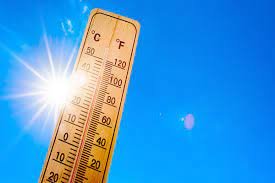A recent study conducted by Pennsylvania State University highlights effective strategies to combat the urban heat island (UHI) effect and alleviate dangerously high temperatures in cities. The research, published in the journal Buildings, suggests that increasing tree canopy, implementing reflective pavements, and constructing taller buildings alongside narrower streets can mitigate the UHI effect.
The study demonstrates that trees play a crucial role in reducing outdoor air temperature, mean radiant temperature (the heat emitted by buildings and infrastructure), and the predicted mean vote index, which measures thermal comfort. Additionally, the researchers found that taller buildings positioned next to narrower streets create shade, resulting in lower mean radiant temperatures and increased comfort levels. Similarly, using high-albedo pavements, which reflect sunlight more effectively, contributes to lower mean radiant temperatures.
The study also sheds light on the disproportionate impact of UHI hotspots on socially disadvantaged communities. Factors such as impervious surfaces and limited vegetation, coupled with social vulnerabilities to heat-related health effects, contribute to higher mortality rates in these communities. Professor Guangqing Chi emphasizes that global warming exacerbates the heat burden, particularly for historically marginalized populations.
The interdisciplinary nature of the project provides an equitable urban design solution to enhance resilience against extreme heat, according to Chi. Conducted in Philadelphia, a city characterized by high poverty rates and extreme weather, the research addresses the combined effects of socioeconomic factors and climate on urban environments.
By utilizing the social vulnerability index and tree coverage data, the researchers identified two neighborhoods in Philadelphia—one with low social vulnerability and high tree coverage, and the other with high social vulnerability and low tree coverage. Using digital 3D models incorporating various factors such as construction materials, land cover, albedo, human-generated heat, and environmental conditions, the researchers ran 24-hour simulations for different seasons and extreme weather conditions.
The study reveals that while trees have a cooling effect, their benefits are limited to their immediate surroundings. Areas devoid of trees experience significantly higher mean radiant temperatures, and the influence of trees on air temperature diminishes with increasing distance from the tree canopy.







